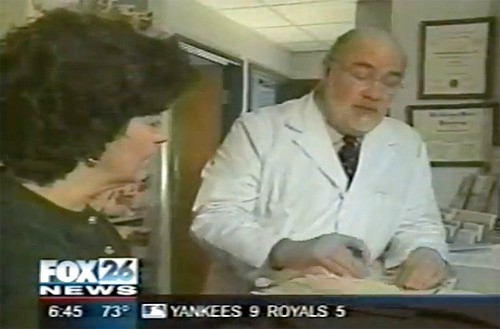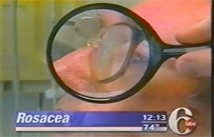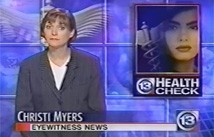'Good Morning America' Features Rosacea

In this vintage video, Dr. Doris Day talks about the ins and outs of rosacea, as well as medical tips and treatment options for successfully managing the condition.

In this vintage video, Dr. Doris Day talks about the ins and outs of rosacea, as well as medical tips and treatment options for successfully managing the condition.

In this vintage video, Fox 26 in Houston broadcast a news item about research into how rosacea can affect people's work lives.

In this segment from July 2001, Action News Philadelphia reports on an NRS-funded study conducted at the Mayo Clinic, which found that the greater warmth of the facial skin of rosacea sufferers may play a role in triggering the unsightly bumps and pimples that are common signs of the disorder.

In June 2000, health newscaster Christi Meyers at KRTK-TV in Houston reported on rosacea as a condition that is common but little known, but "as Baby Boomers age it's expected to become widespread."
In 2001, "Good Day Tampa Bay" reported on rosacea and how its effects can impact "not only your looks, but your livelihood."
David Letterman read an unusual Top Ten list on the Feb. 3, 1999 episode of "The Late Show": "Divas or Presidential Skin Conditions." Rosacea is, of course, on the list as President Bill Clinton's doctors had revealed his rosacea.
In February of 1999, the popular news magazine "Inside Edition" covered rosacea, noting that the threat of impeachment might have been causing President Bill Clinton's rosacea to flare up.
In this archive television clip from WNBC-TV in June of 1989, rosacea is said to be "no laughing matter." W.C. Fields' iconic red nose leads into a description of rosacea's signature symptoms, as explained by Dr. Jonathan Wilkin, long-time chairman of the National Rosacea Society's Medical Advisory Board, which oversees the NRS research grants program.
In this 1989 video, you'll see one of the earliest TV news stories about rosacea. Dr. Art Ulene on NBC's "TODAY" Show explains what rosacea is and how it could be treated.